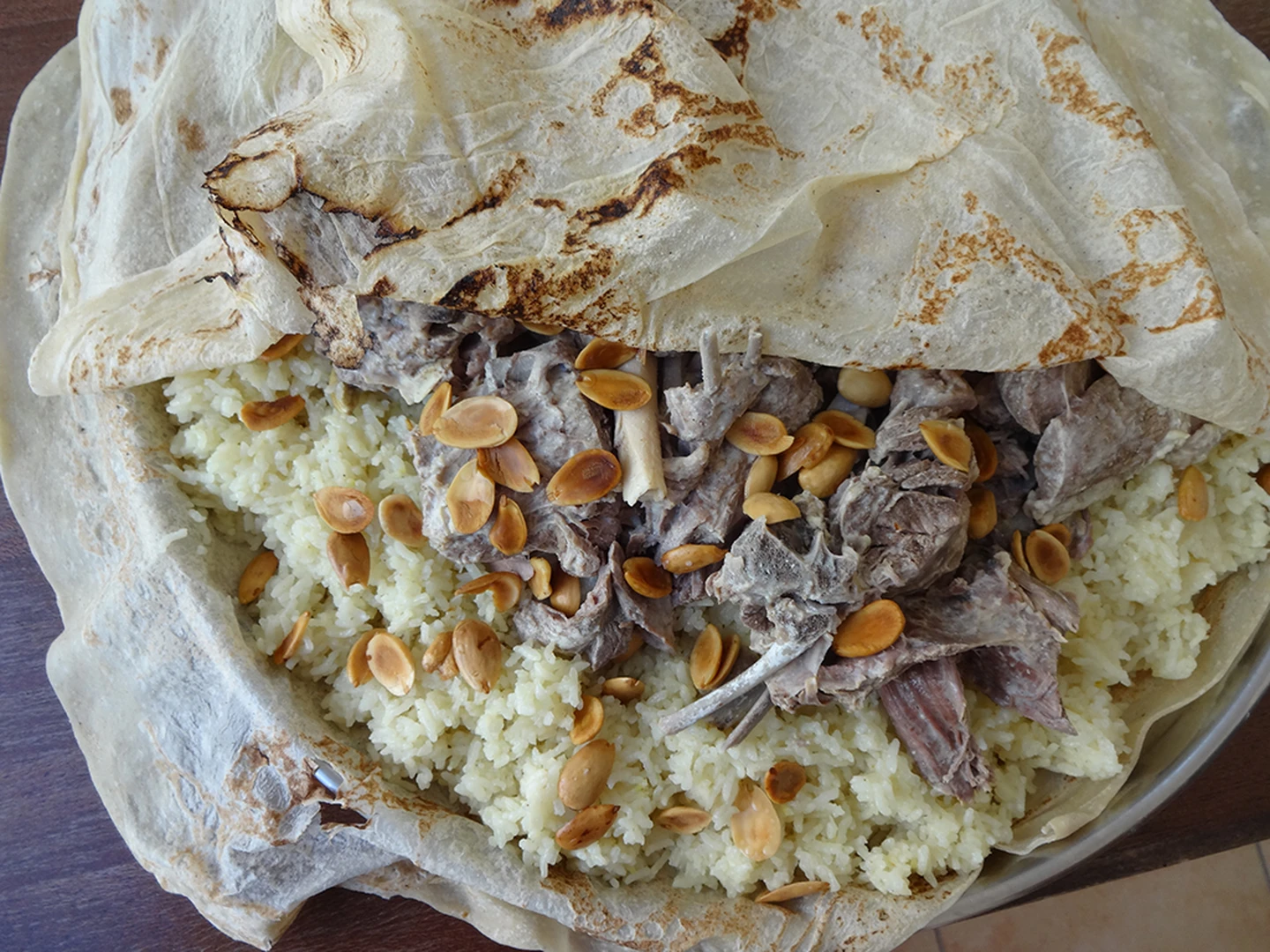
- Maqluba: Is a popular Middle Eastern recipe. Maqluba literally means "upside down." It is made in a huge pot and layered with chicken, fried vegetables, rice, and spices. After maqluba is done cooking, it is flipped upside down onto a big serving platter. It is then topped with fried pine nuts. Maqluba is a traditional Palestinian and Jordanian dish served throughout the Levant.
- Mansaf: Jordan’s most famous traditional dish, Jordanians go back to solid Bedouin roots, from which the concept of mansaf has seen life. Made of lamb cooked in a sauce of fermented dried yogurt and served with rice or bulgur. It is a popular dish eaten throughout the Levant.
- Musakhan: is another dish orchestrated with both the genuine Jordanian and Palestinian taste buds. Made of pile of bread soaked in olive oil and decorated with heaps of onions and sour spices with chicken.
- Makmoura: This is an old Jordanian-oriented dish. Makmoura, meaning buried, boiled chicken and onions are buried under a thick blanket of dough and cooked in the oven until well-done. It is later served in triangle pieces, exactly like cake.
- Rashouf: is another deeply oriented food tightly linked to the Jordanian culture, and is also served as a winter dish. Adding the same yogurt essence used in cooking mansaf to a blend of lentils, groats, and wheat, is it cooked over medium heat and served with sour pickles and vegetable.
- Mujadara: is a healthy protein-filled dish which is easy to prepare. Raw rice and lentils are cooked together and seasoned with lots of cumin and spices. Some like to add partially burned onions atop their plates, but it is best eaten with yogurt, salad, or both. The first recorded recipe for mujaddara appears in Kitab al-Tabikh, a cookbook compiled in 1226 by al-Baghdadi in Iraq and many countries in middle east especially Jordan.
- Labneh: which is also known as strained yoghurt, is a very thick, creamy yoghurt, that’s served at just about every breakfast table in Jordan. It’s not typically eaten like a bowl of yoghurt because it’s so rich, but instead it’s used as a spread for bread, or a dip for vegetables. The taste is sour and creamy, but usually not salty, very similar to sour cream. Labneh can be served in a bowl plain, or drizzled with olive oil, or combined with different herbs or leaves to give it more flavor. I particularly enjoyed some versions of labneh that included local herbs.




 And then Add to Home Screen.
And then Add to Home Screen.